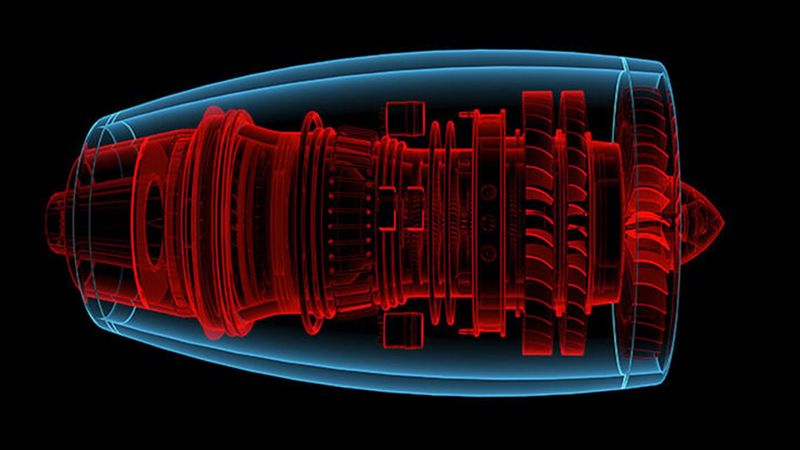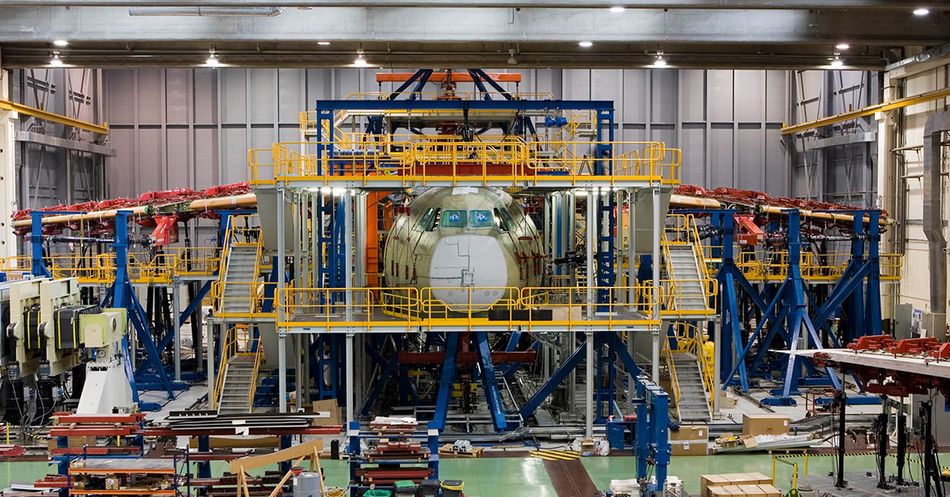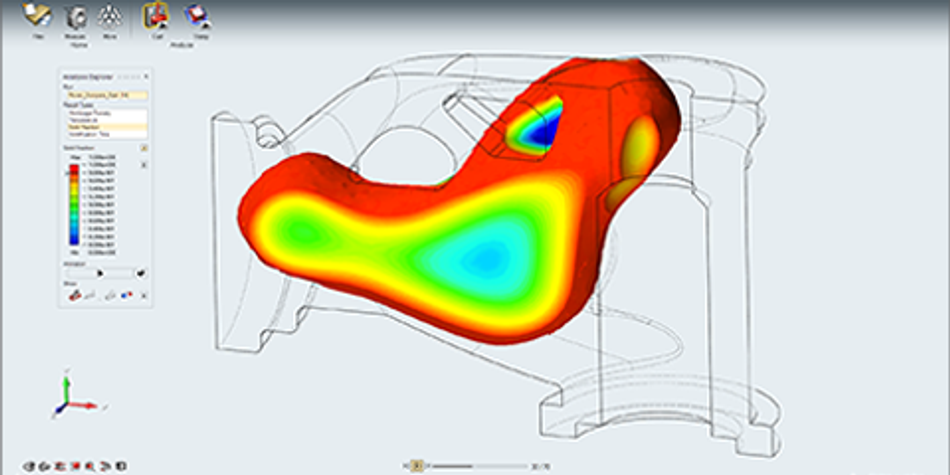Revolutionizing Manufacturing: How Simulation Tools Reduce Risk & Costs, Accelerate Product Design
Simulation tools from Altair streamline the product development cycle by accelerating product design, performing structural and multiphysics analyses, and ensuring manufacturing feasibility.

When applied early in the development cycle, simulation (CAE, FEA) technologies can rapidly accelerate the creation of high-performance, profitable products. But choosing and implementing the right simulation solution effectively can be challenging when you have limited resources.
If you are considering implementing simulation (CAE, FEA) for the first time, utilizing CAD embedded simulation tools but running into challenges with speed and accuracy, or want to take the next step and explore multi-physics analysis, the free virtual event Simulate at the Speed of Design on May 16th, 2024 may be for you.
Read more about the event here.
This article refers to the 2023 event. See the updated 2024 event here.
Introduction
The product design and manufacturing landscape has been significantly transformed in recent years with the development of advanced technologies such as artificial intelligence, robotics, and the Internet of Things (IoT). One of the most crucial developments in this context is the increased dependence on simulation tools, which have proven to be invaluable assets in reducing risk, cutting costs, and expediting product design processes in new manufacturing environments. This article looks at how simulation tools can revolutionize modern manufacturing using case studies and examples from Altair while also highlighting some of the key speakers from Simulate at the Speed of Design event on June 28, 2023.
Reducing Risks in Manufacturing
Simulation tools can act as a safety net for engineers by identifying product design and manufacturing risks at an early stage of the product development cycle. Picking up on these risks later on — for instance, after a physical prototype has experienced critical failure — has undesirable cost implications and leaves less time for other processes in the development cycle.
Structural and Multiphysics Analysis
In traditional product development, concepts are developed into designs, which are developed into prototypes that undergo a variety of performance tests. How does the product perform under strain? How does it respond to changes in temperature? What happens when it crashes or explodes? If the results of these tests are unsatisfactory, designs need to be altered — sometimes extensively and at great cost, such as when re-tooling is required for moldings.
With simulation-driven product development, product designers use computer-aided engineering (CAE) and finite element analysis (FEA) tools to virtually evaluate the design early in the development stage. Simulation can range from ultra-fast meshless structural analysis via Altair SimSolid — in which users can analyze CAD geometries directly, specifying loads, material properties, and boundary conditions without simplifying the geometry — to complex multiphysics analyses via Altair SimLab, which simulates performance under a combination of variables such as thermal, electromagnetic, and fluid dynamics.
One user of SimLab is aeronautical tooling company INESPASA, a regular collaborator of Boeing and Airbus that has deployed the software’s multiphysics capabilities to estimate the stiffness of aeronautical structural elements and calculate their deformation level. This has allowed engineers to quickly assess proposed solutions and determine the most suitable design.
Manufacturing Feasibility
Simulation tools help engineers predict how a manufactured product will perform during use. However, it is equally important to know how a part will behave during its manufacture — and whether it can feasibly be manufactured at all.
Engineers can use process-specific simulation software to determine whether a design can be efficiently manufactured via injection molding, casting, forming, or 3D printing. These processes have numerous variables, such as liquid material flow, work envelope constraints, and thermal shrinkage, all of which affect manufacturing outcomes and must therefore be factored into the design.
Ford Motor Company has used the Altair Inspire Print3D additive manufacturing simulation software when printing automotive brackets. Using process-specific simulation tools, Ford has been able to resolve issues such as detachment of support structures and poor surface finish while optimizing printing parameters for improved performance.
Optimal Resource Allocation
One of the most significant advantages of simulation tools is their ability to optimize resource allocation in manufacturing processes. Engineers can utilize these tools to determine the most efficient use of materials, energy, and labor, thus minimizing waste and reducing production costs.
This optimization can take place at both the design and manufacturing stages. For example, the topology optimization features of a tool like Altair OptiStruct can iterate lightweight, materially efficient designs, while the process simulation tools offered by Altair Inspire can identify efficient manufacturing workflows.
Simulate at the Speed of Design Speaker:
Manufacture High-Quality Metal Formed Parts First Time with Simulation
Jay Weiner - Founder, BiggerBoat Solutions - Canada
With decades of experience in tool and die design and manufacturing, Jay Weiner, founder and forming specialist at BiggerBoat Solutions Ltd. in Ontario, Canada, will share some insights on how using Altair solutions has helped him provide his customers with the most accurate and reliable results.
Accelerating Product Design
Accelerated product design goes hand in hand with risk and cost reduction. Using simulation tools for rapid iteration and optimization, structural analysis, multiphysics analysis, and detailed process simulation allows engineers to identify feasible designs and discard unfeasible designs faster, giving more time for suitable designs to reach production readiness.
Rapid Iteration and Optimization
By allowing engineers to test multiple design iterations virtually, simulation tools enable fast identification of the most promising solutions and instant optimization for real-world conditions. This rapid iteration process significantly reduces the time it takes to move from concept to production, while also ensuring that the final product meets performance and quality standards.
When deployed early in the design process, an intuitive and user-friendly simulation tool like Altair Inspire enables rapid design exploration and product creation within an interactive design environment, ensuring structurally efficient and topologically optimized designs from the outset.
Virtual Prototyping
Within the traditional approach to product design, developing a new product or refining an existing design involves the creation of physical prototypes, which can be both time-consuming and expensive. With simulation tools, engineers can create accurate virtual models that simulate the performance and characteristics of the actual product, allowing them to evaluate various design iterations and make adjustments before committing to physical production.
This virtual prototyping process not only reduces material and labor costs but also shortens the time to market, as virtual testing and validation takes a fraction of the time of the physical process. This provides a competitive advantage to manufacturers, as it allows a greater number of concepts to be explored simultaneously. While virtual prototyping does not totally eliminate the need for physical prototyping, it can help engineers narrow down a shortlist of designs and identify any major structural or performance issues.
Enhanced Collaboration
Advanced simulation tools running on a standalone platform — rather than the basic tools offered within a CAD environment — foster a collaborative environment where engineers can share and analyze design data in real-time, regardless of their physical location. This seamless exchange of information facilitates faster decision making and enables teams to iterate designs quickly, ultimately accelerating the product development cycle. This is particularly useful in areas like Electronic System Design (ESD), where several PCB design engineers may need to work on a product design simultaneously.
Simulate at the Speed of Design Speaker:
Patient-Specific Implants: Power of Simulation and Design for Improved Patient Outcomes
Marques Felipe - CEO, BioArchitects - Brazil
Marques Felipe discusses the use of simulation solutions for virtual environments to determine if patient-specific implants (PSIs) are reliable and safe for use.
Conclusion
Simulation tools have emerged as game-changers in the manufacturing sector, offering a wealth of benefits that contribute to safer, more cost-effective, and more efficient operations. By reducing risks, cutting costs, and speeding up product design, these tools empower engineers to thrive in an increasingly competitive landscape, driving innovation and growth in the industry.
As manufacturing environments continue to evolve, the adoption of simulation tools like Altair Inspire, Altair SimSolid, and Altair SimLab will undoubtedly play a crucial role in determining the success of companies and their ability to maintain a competitive edge.
Simulate at the Speed of Design
On June 28, 2023, Altair will host the Simulate at the Speed of Design virtual global event, featuring presentations from companies using Altair simulation tools to reduce the risk and cost of late design and manufacturing changes.
The event, whose program will be translated live into nine languages, is targeted at the following groups:
- Engineers
- Product design managers
- Newcomers to simulation tools
- Users of CAD-embedded simulation tools looking to transition to a dedicated solution
- Users of simulation tools looking to introduce multiphysics analysis
- CAE users of all experience levels


